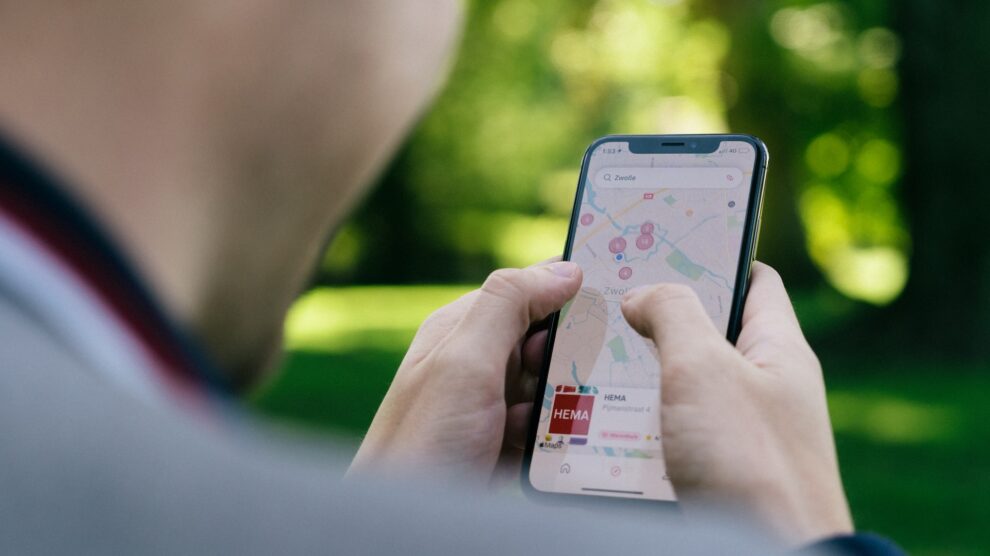The impact of mobile apps on the retail industry is undeniable. More than half of shoppers relied on mobile apps in stores even before 2020, and there’s every reason to believe that this number will only go up. Recently, mobile app development has also aided the response to the public health crisis. Now, with the global economy on a path to recovery, apps can once again spearhead the effort. However, the rules of the game have changed. In this article, we’ll look at some of the ways in which mobile apps can enhance the post-COVID shopping experience and the main considerations developers should be aware of.
COVID-19 Challenges for Retailers
Before the outbreak of COVID-19, the retail industry had already been in competition with online stores, seeking to expand into the e-commerce sector. So, in a sense, the lockdown forced retailers to speed up the pace of change in this direction. What is less obvious is that it also increased the demand for the in-store experience. Shopping is a social endeavor, so while people are concerned about staying safe, they are also eager to return to public spaces, and now it is up to retailers to combine the two.
Safety is another major issue that can be solved through mobile technology. Limiting the number of people on-premises is one example: instead of a good old manual click counter, it is possible to track the movement of customers through an app, which will also make the queuing more transparent and offer enhancements to the shopping process. In the same manner, apps can be useful for the seamless pickup of goods ordered online, reducing crowding and adding to customer satisfaction.
Designing Post-COVID Shopping Apps
The post-COVID world poses new challenges to all industries, setting new rules and requirements that need to be acknowledged. Applications are not an exception, so whether you are a shop owner or a top mobile app developer in Singapore, here are three things you need to be aware of:
- Customer experience: Due to the pandemic, the shopping experience has changed, bringing the perception of safety to the fore. Finding out about what precautions are taken to minimize risks or seeing real-time information about the number of visitors on-premises becomes as important for customers as being notified about discounts.
- Employee experience: The paradigm of spending more time with the client is taking a back seat for now, and apps are a great way of making up for this shortage of face-to-face interaction.
- Reliability: With online shopping becoming the primary route taken by most buyers and expectations soaring higher than ever, a single error means a lost client, so tight integration with inventory management systems is key.
How Apps Improve Shopping Experience
The benefits of mobile apps for the retail industry are already broadly recognized by both shoppers and business owners. Still, in the post-pandemic world, they can bring something new to the table.
In-Store Experience
Prior to 2020, strolling through the store was an entertaining endeavor; now it has turned into more of a risky skirmish. Following the social distancing guidelines, people try to reduce the time spent indoors by finding the necessary item and proceeding to checkout immediately. So knowing where to find a specific item (and whether it is in stock) becomes crucial.
A mobile app is a perfect place to fulfill both needs. For instance, by integrating the app’s contents with the shop’s inventory and sales data, it is possible to display its availability, so no trip to the store ends in disappointment. Not only that, the app can pinpoint the aisle where the item is located, which would be a desirable improvement even in the absence of the pandemic.
Taking things one step further, apps can double as a self-checkout option, so that buyers will scan items as they go through the shop rather than at the checkout. These enhancements have already been featured in apps of several major retailers, receiving praise from both customers and the press.
Pickup and Delivery
Probably the shortest route a buyer can take to purchasing something during the pandemic is ordering it online, then coming to pick it up in a store. The bottleneck here is the last bit – sometimes you still have to wait for quite a while before the order is found, which defeats the whole purpose of the approach. The simplest way to address this is to add a button that will notify a store employee that the buyer has arrived – essentially a shortcut of calling the store.
This idea was adopted and expanded upon by Target as a part of their anti-coronavirus initiative. After the order is made in the app and the confirmation is received that it is ready, the customer can choose “I’m on my way” and drive to the store. The phone then tracks the customer’s location and notifies Target’s team members beforehand, so that by the time you arrive, the order is already there waiting for you. All that is left is to scan the barcode from the app to confirm its reception.
Operational Efficiency
The pandemic has strained the resources of retailers by forcing them to assign employees new roles such as monitoring adherence to safe behaviors. Fortunately, many of these routine tasks can be automated. The simplest option is a small app that would work as a click counter, then collect data from several entrances to display the number of visitors in real-time. Using a combination of sensors and location detection, this process can be fully automated, freeing up employees for other tasks.
This functionality can also be used to improve customer experience. For instance, visitors can join a virtual queue, with the app notifying them when they can enter the store. This not only alleviates the load from employees and minimizes the chance of errors but also gives a sense of responsibility, fostering commitment to safety.
Apps can also help keep the sales floor connected by informing employees about items that are in short supply. Driving all the way to the store only to find that the item is out of stock can be particularly jarring during the pandemic, and apps are a good way to address this.
Final Thoughts
As can be seen, mobile apps will remain a major driver of customer satisfaction in the retail sector. What’s more, they have the potential to address many challenges posed by the coronavirus outbreak, and some of this potential is already being tapped into by major players in the market. In this light, mobile app development in Singapore can transform the way people shop in every corner of the world.





